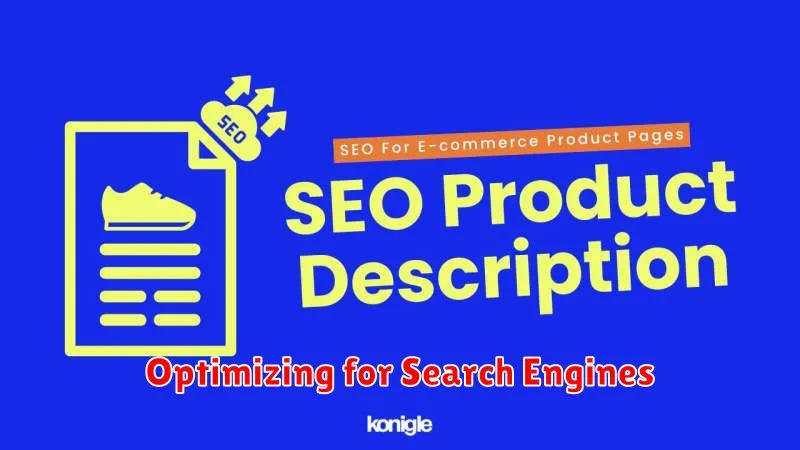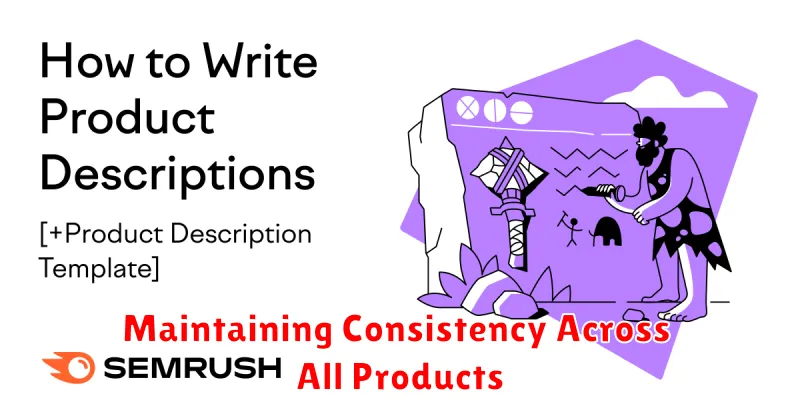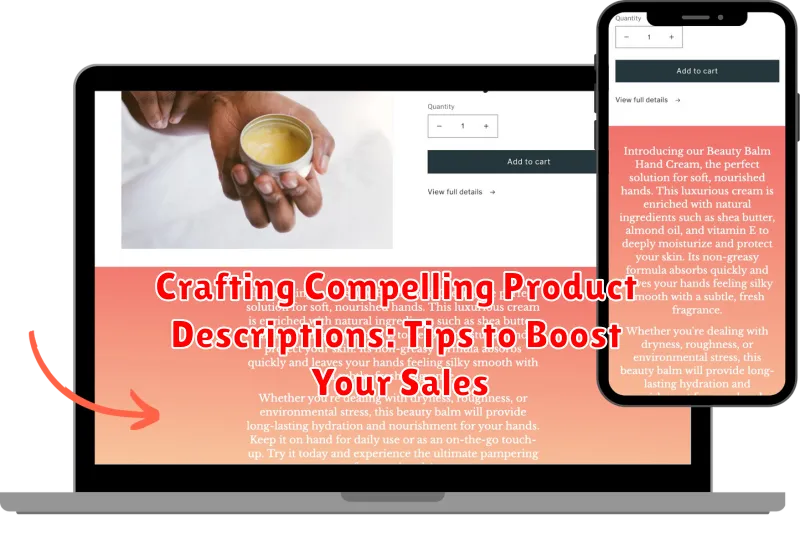In today’s competitive market, crafting compelling product descriptions is crucial for driving sales and capturing the attention of potential customers. A well-written product description not only provides essential information about the product but also persuades customers to make a purchase. This article delves into the art of creating product descriptions that convert browsers into buyers, offering practical tips and strategies to boost your sales.
From understanding your target audience to using persuasive language and highlighting key features, optimizing your product descriptions can significantly impact your bottom line. Whether you’re an e-commerce entrepreneur or a seasoned marketer, mastering the craft of writing effective product descriptions is essential for success. Discover how to transform mundane descriptions into engaging narratives that resonate with your audience and compel them to click “add to cart.” Learn how to write product descriptions that sell.
Understanding Your Target Audience
Before crafting a single word, know your ideal customer. Understanding your target audience is paramount to writing effective product descriptions. Ask yourself key questions about your target demographic.
Who are they? What are their needs and pain points? What motivates their purchasing decisions? Are they tech-savvy, budget-conscious, or luxury-focused?
Consider factors like age, gender, occupation, income level, lifestyle, and values. Tailoring your language and messaging to resonate with these specifics will drastically improve engagement and conversion rates.
For example, a product description for a tech gadget aimed at younger audiences might use informal language and emphasize trendy features, whereas a description for the same product targeting professionals might focus on productivity and efficiency enhancements.
Highlighting Key Features and Benefits
Clearly showcasing your product’s key features and benefits is crucial for converting browsers into buyers. Customers need to understand exactly what they’re getting and why it’s valuable to them.
Start by listing the key features, which are the factual attributes of your product. For example, if you’re selling a laptop, features might include screen size, processor type, and RAM.
Then, translate those features into tangible benefits. Instead of just saying “16GB RAM,” explain the benefit: “16GB RAM allows for seamless multitasking and lightning-fast performance.” Focus on how each feature improves the customer’s life or solves a problem.
Use strong action verbs and vivid adjectives to paint a picture of the positive experience the customer will have. Instead of “large screen,” consider “expansive 15-inch display perfect for immersive viewing.”
Using Persuasive Language and Tone
Persuasive language is crucial for transforming product details into compelling narratives. Focus on the value proposition by highlighting how the product solves a problem or improves the customer’s life.
Employ sensory words to engage the reader’s imagination and create a vivid mental image of experiencing the product. Words like “velvety,” “crisp,” or “robust” can add depth and emotional connection.
Adopt a tone that aligns with your brand and target audience. A formal tone suits luxury goods, while a casual tone works well for everyday products. Consistency is key.
Power words like “guaranteed,” “proven,” and “exclusive” can create a sense of urgency and desirability. Use them sparingly to maintain credibility and avoid sounding hyperbolic.
Address the reader directly using “you” language. This fosters a personal connection and makes the description feel more relevant to their needs and desires.
Optimizing for Search Engines

Optimizing your product descriptions for search engines is crucial for driving organic traffic and increasing visibility to potential customers. By incorporating relevant keywords strategically, you can improve your product’s ranking in search results and attract a larger audience.
Keyword Research: Begin by conducting thorough keyword research to identify the terms and phrases your target audience uses when searching for products similar to yours. Tools like Google Keyword Planner can assist in discovering high-volume, low-competition keywords.
Strategic Keyword Placement: Naturally incorporate these keywords into your product title, description, and bullet points. Avoid keyword stuffing, which can negatively impact your search ranking. Focus on providing a clear and concise description while seamlessly integrating relevant keywords.
Meta Descriptions: Craft compelling meta descriptions that accurately reflect the product’s value proposition and include relevant keywords. These concise summaries appear in search results and influence click-through rates.
Product Category and Attributes: Ensure your product is correctly categorized and all relevant attributes are filled out. This helps search engines understand what your product is and to whom it should be shown.
Showcasing High-Quality Images and Videos
Visuals are crucial for showcasing your product effectively. High-quality images and videos can significantly impact a customer’s purchase decision. They provide a tangible representation of your product and allow customers to visualize owning and using it.
Invest in professional photography or videography to capture your product in the best possible light. Images should be clear, well-lit, and showcase the product from multiple angles. Lifestyle shots, demonstrating the product in use, can further enhance its appeal.
For videos, consider creating short, engaging product demos. Highlight the key features and benefits in action. Keep videos concise and to the point to maintain viewer interest.
Ensure your visuals are optimized for web use. Large file sizes can slow down page loading times, negatively impacting user experience. Compress images and videos without sacrificing quality to ensure quick loading speeds.
Incorporating Customer Reviews and Testimonials
Customer reviews and testimonials are powerful tools for building trust and encouraging purchases. Authentic feedback from other buyers provides social proof, reassuring potential customers about the value and quality of your product.
Strategically incorporate positive reviews within your product descriptions. Highlight snippets that address common concerns or emphasize key features. For example, if durability is a selling point, feature a review that praises the product’s longevity.
Consider creating a dedicated section for testimonials on your product pages. This allows for a more comprehensive presentation of customer experiences. Prioritize reviews that are detailed and specific, offering valuable insights into the product’s benefits.
Maintaining Consistency Across All Products

Consistency in product descriptions builds a strong brand identity and fosters trust with customers. A unified voice and format make it easier for customers to understand your offerings and compare products within your brand.
Develop a style guide for product descriptions. This guide should outline the tone of voice (e.g., formal, informal, friendly), vocabulary, and formatting guidelines (e.g., use of bullet points, capitalization, abbreviations).
Consider creating templates for descriptions, especially if you have a large product catalog. Templates ensure crucial information, such as dimensions, materials, and care instructions, is consistently included. This approach simplifies the writing process while maintaining uniformity.
Regularly review and update your product descriptions to ensure they adhere to the established style guide. This helps maintain consistency over time, even as your product line evolves.
A/B Testing Different Descriptions
A/B testing is a crucial step in optimizing your product descriptions for maximum impact. This method involves creating two different versions (A and B) of a product description and showing them to separate groups of potential customers. By analyzing the performance of each version, you can determine which resonates more effectively with your target audience.
When setting up your A/B test, focus on one element at a time. For example, you might test a short, concise description against a more detailed one, or compare the impact of using bullet points versus paragraph format. Track key metrics like click-through rates, conversion rates, and average order value.
Analyzing the collected data will reveal which version performs better. Implement the winning version and continue to iterate with further A/B tests. Continuous testing and refinement are essential for creating truly compelling product descriptions that drive sales.

